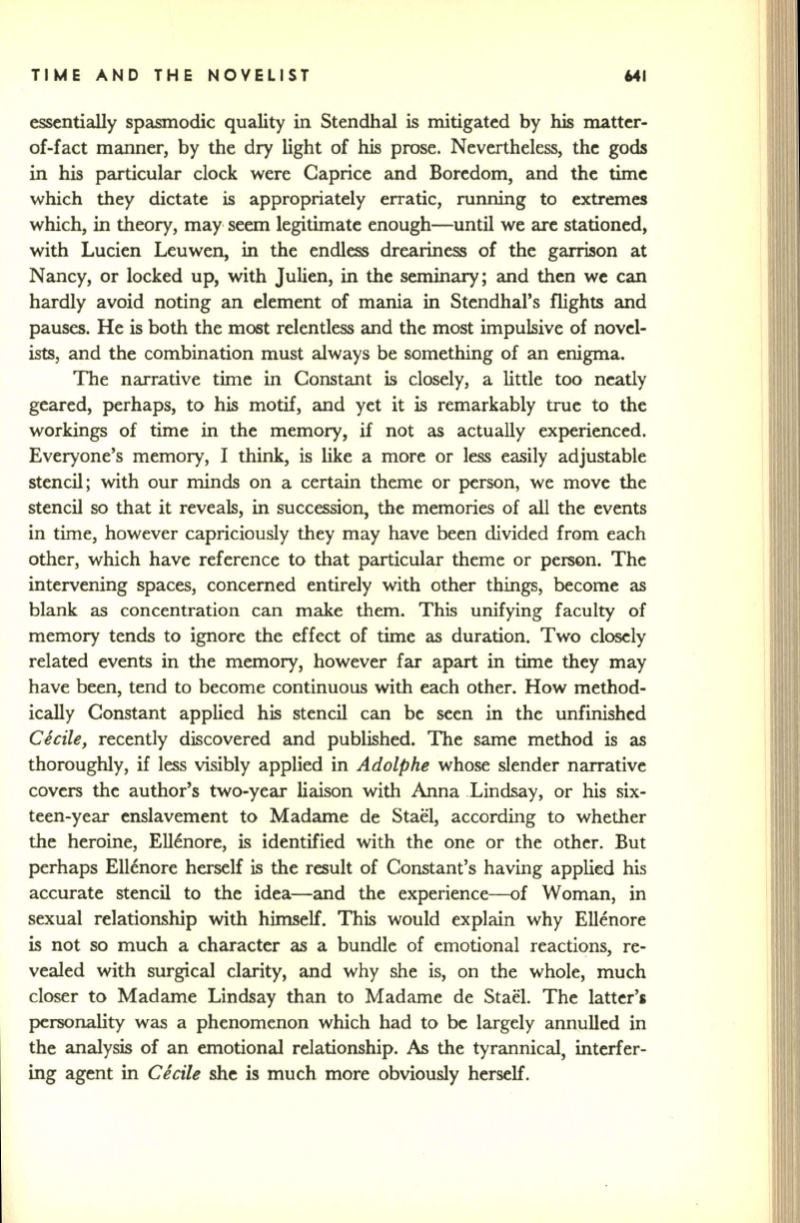
TIME AND THE NOVELIST
641
essentially spasmodic quality in Stendhal is mitigated by
his
rnatter–
of-fact manner, by the dry light of his prose. Nevertheless, the gods
in his particular clock were Caprice and Boredom, and the time
which they dictate is appropriately erratic, running to extremes
which, in theory, may seem legitimate enough-until we are stationed,
with Lucien Leuwen, in the endless dreariness of the garrison at
Nancy, or locked up, with Julien, in the seminary; and then we can
hardly avoid noting an element of mania in Stendhal's flights and
pauses. He is both the most relentless and the most impulsive of novel–
ists, and the combination must always be something of an enigma.
The narrative time in Constant is closely, a little too neatly
geared, perhaps, to his motif, and yet it is remarkably true to the
workings of time in the memory, if not as actually experienced.
Everyone's memory, I think, is like a more or less easily adjustable
stencil; with our minds on a certain theme or person, we move the
stencil so that it reveals, in succession, the memories of all the events
in time, however capriciously they may have been divided from each
other, which have reference to that particular theme or person. The
intervening spaces, concerned entirely with other things, become as
blank as concentration can make them. This unifying faculty of
memory tends to ignore the effect of time as duration. Two closely
related events in the memory, however far apart in time they may
have been, tend to become continuous with each other. How method–
ically Constant applied his stencil can be seen in the unfinished
Cecile,
recently discovered and published. The same method is as
thoroughly, if less visibly applied in
Adolphe
whose slender narrative
covers the author's two-year liaison with Anna .Lindsay, or his six–
teen-year enslavement to Madame de Stael, according to whether
the heroine, Ellenore, is identified with the one or the other. But
perhaps Ellenore herself is the result of Constant's having
appli~d
his
accurate stencil to the idea-and the experience--of Woman, in
sexual relationship with himself. This would explain why ElIenore
is not so much a character as a bundle of emotional reactions, re–
vealed with surgical clarity, and why she is, on the whole, much
closer to Madame Lindsay than to Madame de Stael. The latter',
personality was a phenomenon which had to be largely annulled in
the analysis of an emotional relationship.
As
the tyrannical, interfer–
ing agent in
Cecile
she is much more obviously herself.


